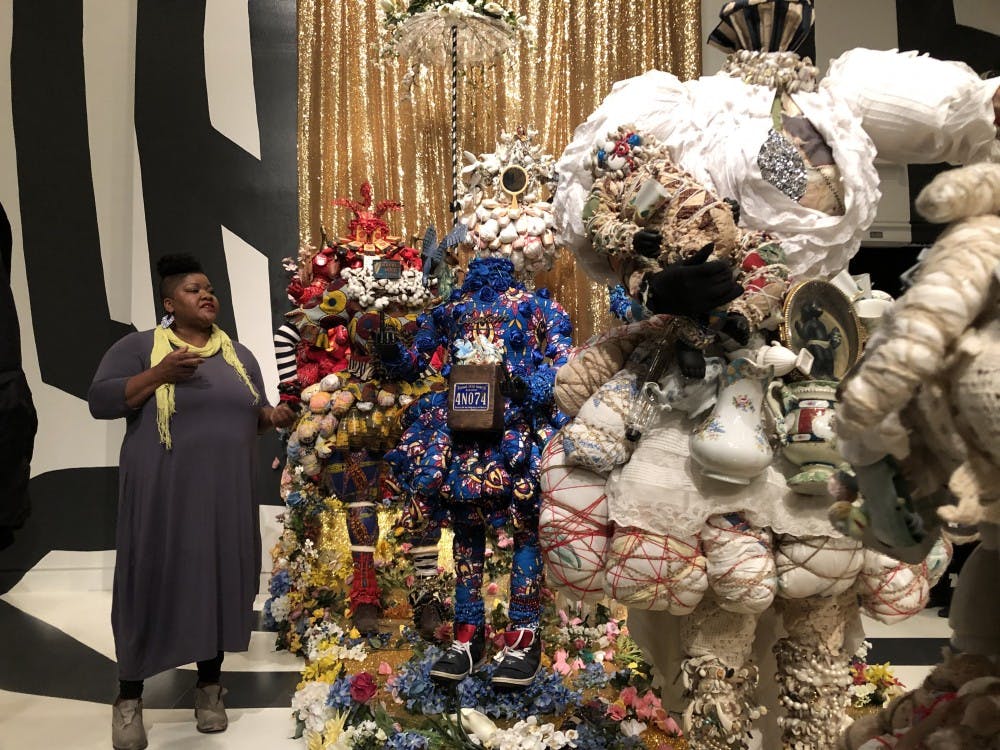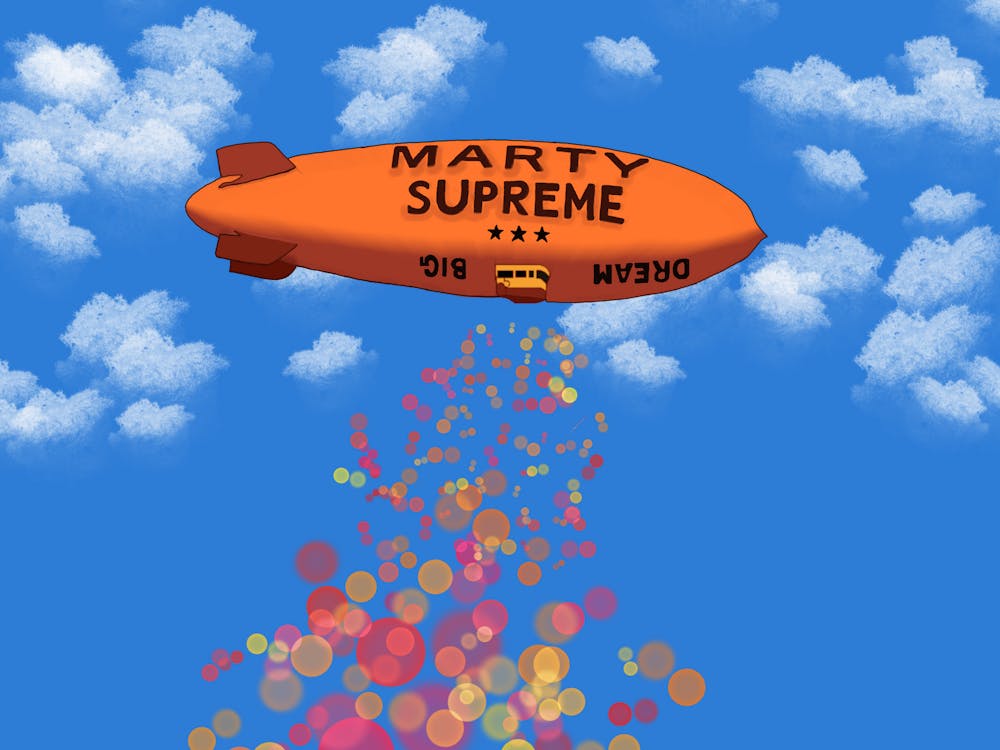Visitors to the Fralin Museum of Art can hear the new installation from Pittsburgh-based artist Vanessa German before climbing the marble stairs to the second floor. A three-part exhibit accompanied by a 24-minute soundscape which plays on repeat, “sometimes.we.cannot.be.with.our.bodies.” — which opened Feb. 22 and is on display until July 7 — is the museum’s most visually and thematically impressive in recent memory.
“I think she’s one of the most important artists at work in America today,” said Matthew McLendon, director and chief curator of the Fralin, in his opening remarks. An impressive crowd of 30 or so people had gathered on a rainy Saturday afternoon to hear McLendon speak before experiencing the exhibit for themselves.
McLendon shared with the group his excitement about the new installation, which he described as “very different to anything … in the Fralin before.” The opportunity for German to bring her work in Charlottesville was a lucky one — McLendon described German’s career as having “a kind of meteoric trajectory just in the last year.”
German’s success will be no surprise to visitors of “sometimes.we.cannot.be.with.our.bodies.,” which begins with walls of powerful quotes, is followed by an impressive room of disembodied-head sculptures and ends with an immaculate procession of headless bodies, glitter and flowers. The exhibit builds upon itself — instead of providing referential texts on the walls or names of specific works, the spectator is asked to contemplate for herself the multi-layered messaging of German’s work.
“She calls herself a ‘citizen artist,’” McLendon said. “She speaks of art’s role and function of shedding light on society … she very much feels that is her role as the artist, to resurrect memory of those that have been lost.”
“sometimes.we.cannot.be.with.our.bodies.” has multiple meanings, McLendon noted, and it deals with violence against people of color in the LGBTQ+ community, the dehumanization of victims of violence by the media and out-of-body experiences caused by extensive trauma. But while the themes the exhibit tackles are heavy, disturbing and sad, the installation — particularly the final room — possesses a breathtaking beauty and joy.
This combination was purposeful, McLendon told the crowd.
“She deals with absolutely the most important issues facing our society today … she’s dealing very pointedly and poignantly with violence, particularly violence against people of color,” McLendon said. “But Vanessa always through her work reminds us … the only way we will get through and solve these societal problems is through empathy and love … there’s a positiveness to her ultimate message.”
A queer woman of color herself, German’s identity and personal experiences are woven into this exhibit, which feels at once very intimate — between artist and visitor — and quite vast in its reach. Her voice is present in the installation during the soundscape as she hosts a staged call-in radio show, during which she provides listeners “music you can groove and grieve and reach up and cry to.” The combination of themes that are seemingly at odds with one another — violence, grief and trauma paired with empathy, love and wonder — challenges spectators to participate through thought and conversation.
“I hope that you approach [the exhibit] with the solemnity it deserves,” McLendon said. “But remember that Vanessa’s ultimate hope is that you take away the importance of empathy and understanding and love to make it through and solve these … societal problems.”
With much to contemplate about the exhibit and its themes, visitors will want to spend a good deal of time exploring the intricacies of the installation. The visual splendor of the final room — which is also where the audio presentation is meant to be best heard — is as rich in detail as it is in themes and questions.
The headless bodies stand in various positions — motions of pointing, reaching and running are present in the exhibit, despite the complete stillness of the mannequins — on a glittery-gold curtain which seems to fall from the top of the wall down onto the floor. Flowers, plants and patches of quilt adorn the curtain and the bodies, which are each distinct. Using different combinations of color, found objects and textiles, German has constructed faceless identities, each striking and intricate.
“sometimes.we.cannot.be.with.our.bodies.” changes as the soundscape continues, meaning each visitor has a different experience of what they see based on what they hear and when they hear it. It’s the space-conscious design, combined with the content of the 24-minute track, which makes the exhibit an ambitious undertaking for the Fralin.
“Vanessa is a great lover of museums and museum spaces and the power of museum spaces,” McLendon said. “This is a way of really emphasizing that you are in a space of power, in a space of display — you are in a special circumstance here, experiencing this work.”
German’s work questions the power institutions hold, celebrates the bravery of constructing identity and reclaims the dehumanized victims of violence with empathy and love. It’s a massive undertaking and a sensitive topic — but “sometimes.we.cannot.be.with.our.bodies.” challenges the visitor to think, to mourn, to celebrate — and to act.







